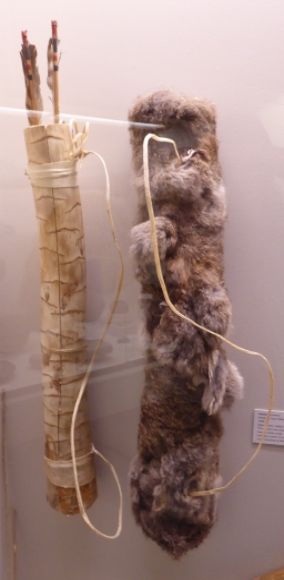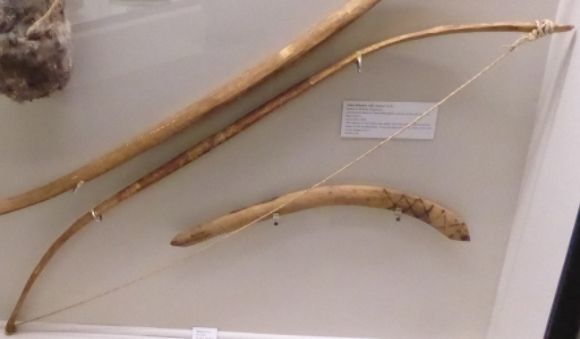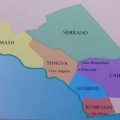In general, California Indians have been classified as hunters and gatherers, meaning that they tended to obtain food from hunting and from gathering wild plants. Subsistence patterns—how people obtained the calories which are needed to sustain life—are determined, in part, by the environment and the resources within that environment.
The Cahuilla homeland in California was bounded on the north by the San Bernardino Mountains; on the south by the northern Borrego Desert; on the east by the Colorado Desert; on the west by the present-day city of Riverside. While they did have some agriculture, the Cahuilla obtain much of their food through the gathering of plant foods and hunting. In terms of caloric importance, hunting was a secondary, though important, food source.
The Cahuilla Continuum was an exhibit at the Riverside Metropolitan Museum authored and curated by Sean C. Milanovich. The exhibit told the story of the Cahuilla from creation to the present day. One display in the exhibit focused hunting (ámuqa).
Among the Cahuilla, hunting was done by the men and it was usually done in groups so that there would be help in carrying the meat back to the village. In his entry on the Cahuilla in the Handbook of North American Indians, Lowell Bean describes their hunting this way:
“Hunting was the occupation of adult able-bodied men who stalked their prey, chased it, hid in blinds, maneuvered them down trails into pits, or exhausted them so they could be clubbed to death.”
Prior to hunting, the men would traditionally fast. According to the Museum display:
“He prayed to the Creator giving thanks for the life of the animals hunted. Sometimes there were songs. When the ámuwet [hunter] was hunting súkat (deer), there were songs asking the súkat to give its life so the hunter and his people could eat.”
Large game, such as deer and antelope, were hunted with the bow (hul) and arrow (húyal). Bows were generally made from willow or mesquite. Arrows varied in size according to their intended use.
 Shown above quivers (húyily) made by Sean Milanovich in 2008.
Shown above quivers (húyily) made by Sean Milanovich in 2008.  Shown above are some arrows.
Shown above are some arrows.  Shown above is a bow and a rabbit stick.
Shown above is a bow and a rabbit stick.  Shown above is a rabbit stick (súish kélawet vúk) made by Manuel Chaparosa of the Los Coyotes Band of Cahuilla and Cupeño Indians about 1915-1932.
Shown above is a rabbit stick (súish kélawet vúk) made by Manuel Chaparosa of the Los Coyotes Band of Cahuilla and Cupeño Indians about 1915-1932.
In addition to using rabbit sticks for killing or stunning rabbits, they were also captured in nets, snares, and traps.
 Shown above is an arrow straightener (patávniva’al) made about 1875.
Shown above is an arrow straightener (patávniva’al) made about 1875.
Among the desert-dwelling Cahuilla, dogs were not used for hunting, but were considered to be special pets with supernatural powers. Dogs could understand human conversation but could not speak.


Leave a Reply